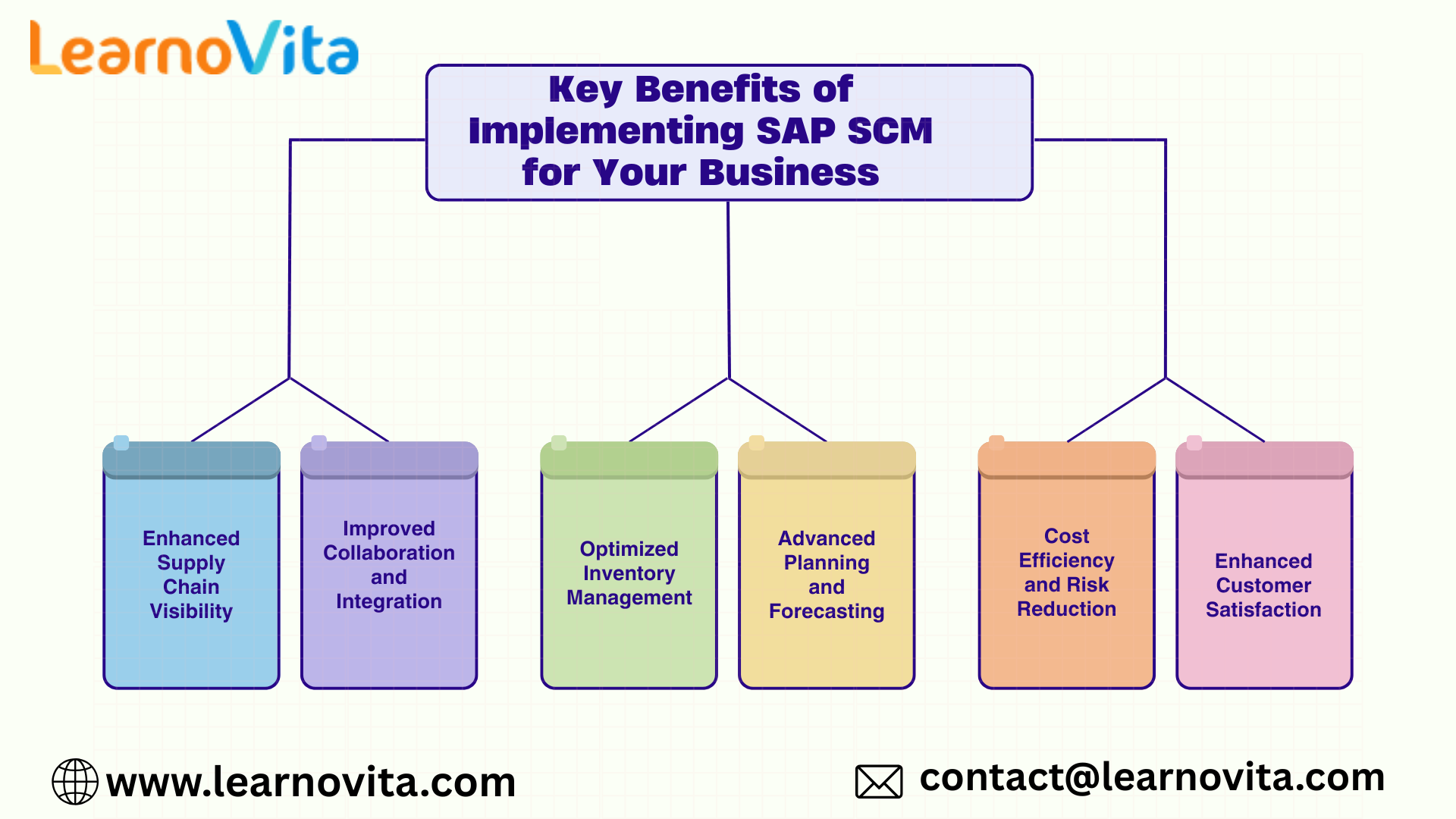How Businesses Gain a Competitive Edge Through SAP SCM Implementation

In today’s competitive business environment, an agile and efficient supply chain is essential for success. Companies must manage procurement, production, logistics, and delivery effectively while controlling costs and meeting customer expectations. SAP Supply Chain Management (SAP SCM) provides a comprehensive solution to these challenges by streamlining operations, offering real-time insights, and enabling smarter decision-making. Implementing SAP SCM Online Training can transform your supply chain into a highly responsive, cost-effective, and growth-oriented system.
1. Complete Supply Chain Visibility
SAP SCM offers full visibility across the entire supply chain, allowing businesses to track inventory, monitor production, and manage shipments in real time. This transparency helps identify potential bottlenecks, prevent delays, and optimize operations. With actionable insights at every stage, companies can make faster, data-driven decisions that enhance efficiency and responsiveness.
2. Seamless Integration Across Departments
A key advantage of SAP SCM is its seamless integration with other SAP solutions like SAP ERP and SAP S/4HANA, as well as third-party systems. This ensures that procurement, manufacturing, logistics, and sales teams all operate using the same accurate, up-to-date information. Improved collaboration reduces errors, streamlines workflows, and ensures consistent data flow both internally and with external partners.
3. Smarter Inventory Management
Maintaining the right inventory levels is critical for cost control and meeting customer demand. SAP SCM automates inventory tracking, replenishment, and demand forecasting. This helps prevent overstocking and stockouts, reduces carrying costs, and ensures products are available when customers need them, improving both efficiency and cash flow.

4. Advanced Planning and Forecasting
With AI-driven forecasting and advanced analytics, SAP SCM enables proactive planning. Businesses can predict demand more accurately, optimize production schedules, and allocate resources efficiently. This Software Training Institute reduces waste, improves operational performance, and ensures that supply chain activities align with business objectives.
5. Cost Savings and Risk Mitigation
Automation and predictive analytics in SAP SCM reduce manual errors and improve operational efficiency, resulting in cost savings. The system also helps identify potential risks, such as supplier delays or logistics disruptions, before they impact operations. Proactively addressing these risks ensures business continuity and safeguards profitability.
6. Enhanced Customer Satisfaction
An optimized supply chain leads directly to better customer experiences. SAP SCM ensures faster order fulfillment, accurate tracking, and reliable product availability. Consistently delivering on promises strengthens customer trust, fosters loyalty, and gives your business a competitive edge.
Conclusion
Implementing SAP SCM is more than adopting a software solution it’s a strategic decision that enhances the efficiency, resilience, and competitiveness of your business. By improving visibility, integration, inventory management, planning, and customer satisfaction, SAP SCM enables organizations to operate smarter, reduce costs, and achieve sustainable growth. For companies looking to thrive in a rapidly changing market, SAP SCM is an essential tool for long-term success.
- Questions and Answers
- Opinion
- Motivational and Inspiring Story
- Technology
- Live and Let live
- Focus
- Geopolitics
- Military-Arms/Equipment
- Sicurezza
- Economy/Economic
- Beasts of Nations
- Machine Tools-The “Mother Industry”
- Art
- Causes
- Crafts
- Dance
- Drinks
- Film/Movie
- Fitness
- Food
- Giochi
- Gardening
- Health
- Home
- Literature
- Music
- Networking
- Altre informazioni
- Party
- Religion
- Shopping
- Sports
- Theater
- Health and Wellness
- News
- Culture

